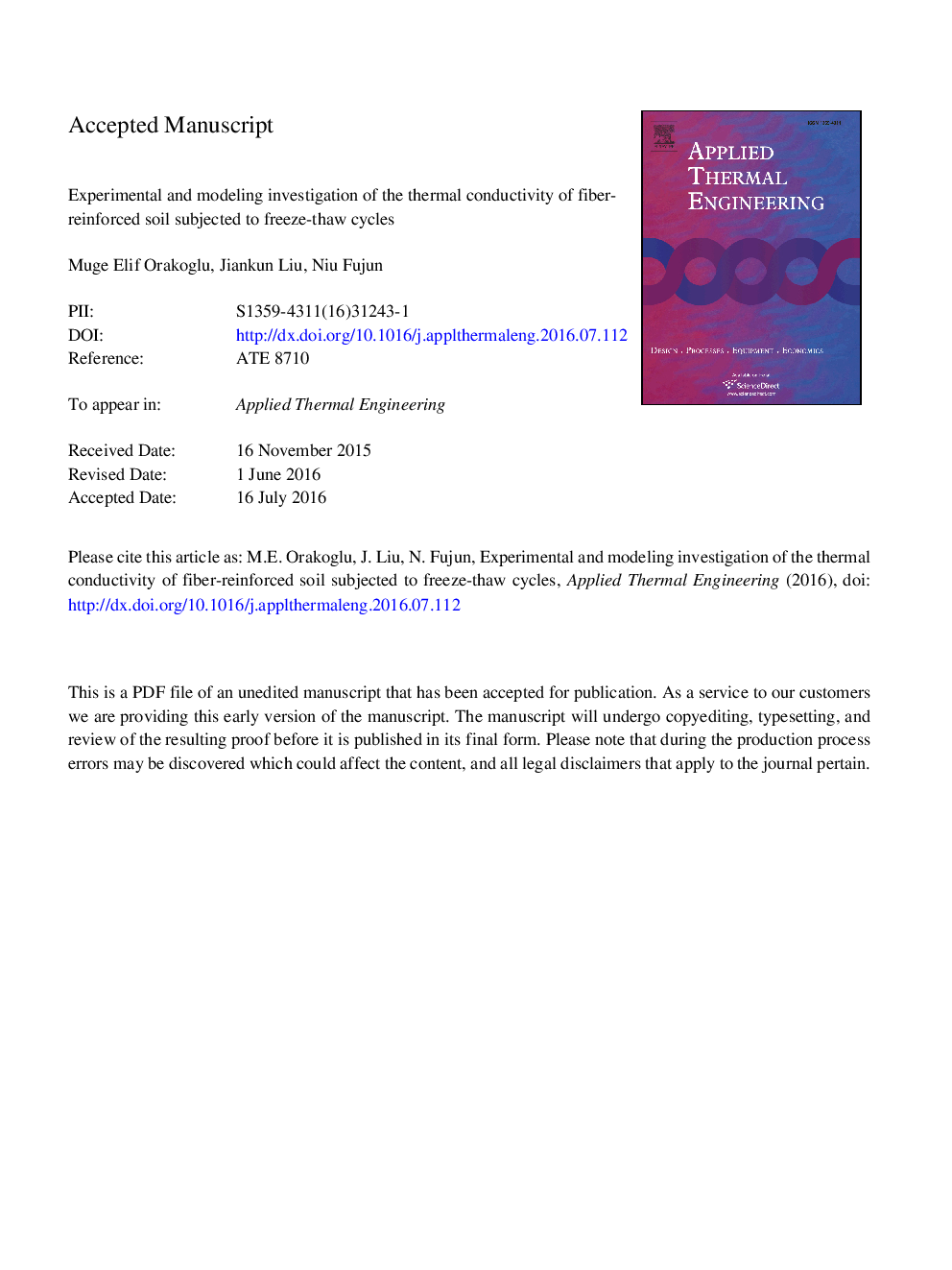| Article ID | Journal | Published Year | Pages | File Type |
|---|---|---|---|---|
| 7046902 | Applied Thermal Engineering | 2016 | 28 Pages |
Abstract
The thermal conductivity of fine-grained soil, both unreinforced and reinforced with randomly oriented basalt, glass, and steel fibers, was tested by means of the transient hot-wire method with a Quickline-30 Thermal Properties Analyzer. The thermal conductivities of specimens were determined as a function of fiber volume fractions, freeze-thaw cycles, and temperature through laboratory studies. Thermal conductivity of the fiber-reinforced soil decreased for all freeze-thaw cycles and temperature values. The most remarkable reduction of thermal conductivity was measured on all ratios of the steel fiber-reinforced soil and 1% basalt fiber-reinforced soil. Moreover, the statistical-physical model proposed by Usowicz was applied to evaluate the thermal conductivity of fiber-reinforced soil by considering soil-fiber composites and environmental factors. The results showed a close match between the values estimated by the statistical-physical model and the experimental values for various fiber-reinforced soils in a wide range of fiber ratios, temperatures, water contents, and freeze-thaw cycles.
Related Topics
Physical Sciences and Engineering
Chemical Engineering
Fluid Flow and Transfer Processes
Authors
Muge Elif Orakoglu, Jiankun Liu, Fujun Niu,
